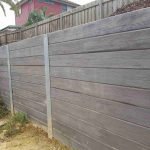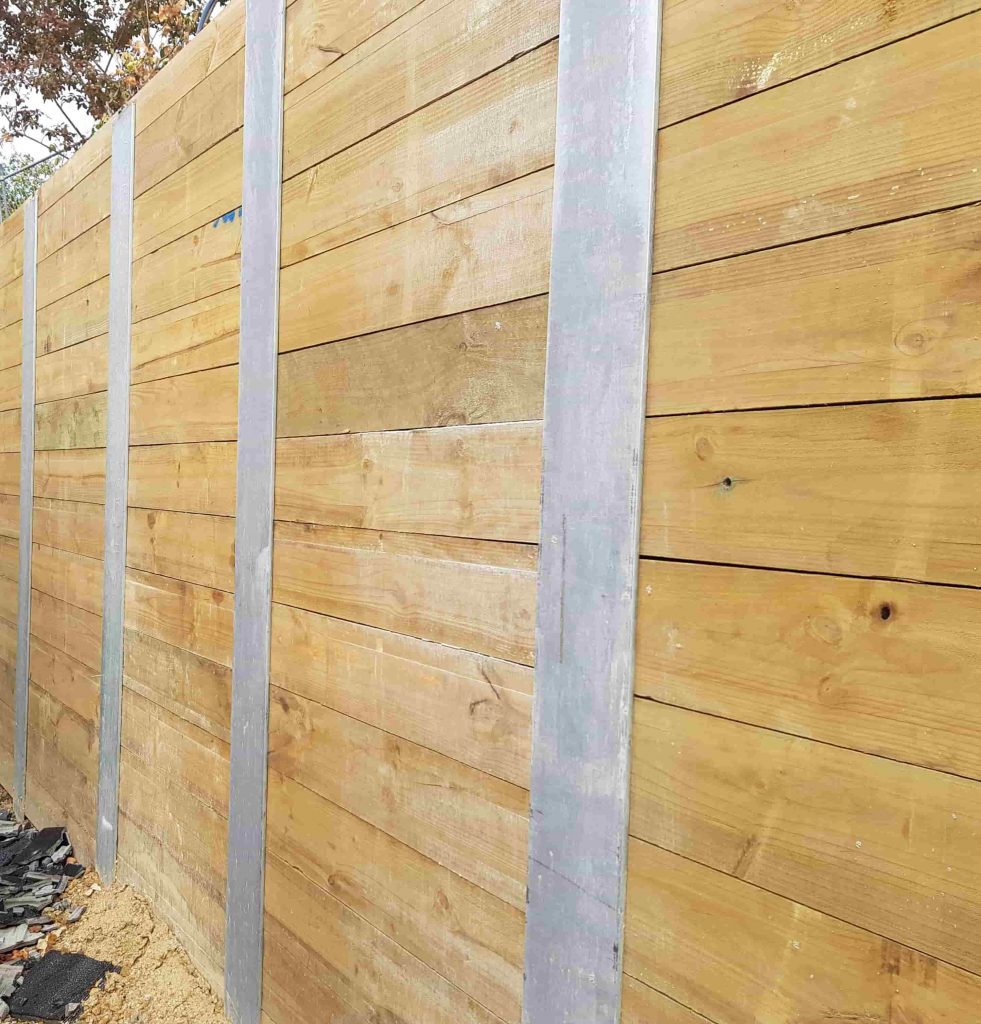Introduction
Building a retaining wall is not practically aesthetic appeals; it has to do with performance, land management, and boosting your residential or commercial property's value. Whether you're handling a sloped lawn or merely want to produce distinct levels in your garden, understanding the Step-by-Step Retaining Wall Installation Process is crucial. In this comprehensive guide, we will break down whatever you need to know, from selecting materials like timber sleepers, concrete sleepers, and H-beams to guaranteeing that the installation procedure is carried out like a pro.
What Is a Keeping Wall?
Definition and Purpose
A retaining wall is a structure created to limit soil to abnormal slopes. Its main function is to manage modifications in elevation by holding back earth, thereby avoiding disintegration and offering stabilization.
Types of Maintaining Walls
There are a number of types of keeping walls, consisting of:
- Gravity Walls: Rely on their own weight to withstand pressure. Cantilever Walls: Usage take advantage of through a base and stem. Sheet Stack Walls: Employ thin sheets driven into the ground. Anchored Walls: Use cable televisions anchored into the soil for additional support.
Why Construct a Keeping Wall?
Enhancing Property Aesthetics
Retaining walls can change an otherwise plain landscape into aesthetically appealing tiers. They can work as flower beds or decorative functions that enhance your home's curb appeal.
Preventing Erosion
One of the main reasons homeowners install retaining walls is to prevent soil erosion. By holding back earth, they protect gardens and yards from being gotten rid of during heavy rains.
Creating Functional Space
If your yard has steep slopes, a properly designed retaining wall can develop flat surface areas for outdoor patios, gardens, or perhaps play locations for children.
Materials for Maintaining Walls
Timber Sleepers
Advantages of Timber Sleepers
Timber sleepers are popular due to their natural look and ease of setup. They're frequently utilized in domestic jobs where aesthetics matter a lot of.
Disadvantages of Timber Sleepers
However, wood can rot in time if not effectively treated or maintained. It might likewise be susceptible to pests like termites.
Concrete Sleepers
Benefits of Concrete Sleepers
Concrete sleepers use resilience and strength that wood can not match. They're resistant to rot and insects and can stand up to harsh weather condition conditions.
Drawbacks of Concrete Sleepers
On the drawback, concrete can be more costly than wood options and may need professional setup due to its weight.
H-Beams
H-beams are robust structural elements that offer extraordinary strength for massive retaining walls or business projects.
When to Utilize H-Beams
These beams are ideal when dealing with substantial elevation modifications or when integrating in unstable soil conditions.
Tool Requirements for Installation
Essential Tools for DIY Installers
To effectively build a retaining wall, you'll need https://penzu.com/p/b136cff172a5e21e different tools:
Shovel Level Tape Measure Hammer Power Drill Compactor Machine (for bigger walls)Optional Tools
While not compulsory, having these tools on hand can make your task much easier:

- Wheelbarrow Excavator (for larger setups) Safety Equipment (gloves, safety glasses)
Step-by-Step Retaining Wall Setup Process Explained
Step 1: Planning Your Project
Before you dive into installation, spend some time to plan your project thoroughly.
Choosing the Right Location
Make sure you select a location that requires stabilization while considering local zoning laws relating to wall heights and proximity to property lines.
Calculating Dimensions
Measure how tall the wall needs to be based on the slope's gradient and make sure that you represent drainage which plays a necessary function in keeping stability over time.
Step 2: Event Necessary Permits
In numerous areas, setting up a retaining wall may require licenses from local authorities. Constantly check guidelines before starting construction!
Step 3: Preparing Your Site
Clearing debris from the area where you plan to install the wall makes sure that you have sufficient space for digging and putting together products without obstruction.
Marking Your Layout
Use stakes and string lines to detail where your wall will go. This assists envision the last structure before any digging begins.
Step 4: Digging Trenches
Dig trenches deep enough (normally around 12 inches) so that your base product sits firmly listed below ground level-- this offers stability versus lateral pressure from soil behind it.
Step 5: Installing Base Material
Adding gravel or crushed stone at the bottom of your trench aids in drainage while creating an even surface area for laying your very first course of blocks or timbers.
Compacting Base Material
Using a compactor machine helps achieve maximum density which avoids settling later on!
Step 6: Laying Your Very First Course
If you're using timber sleeper or concrete sleeper blocks, begin laying them down at one end of your ready trench-- use a level frequently!
Ensuring Levelness
Check frequently with your level tool; this action is crucial as it sets the tone for all subsequent layers!
Step 7: Building Upwards
Continue stacking blocks according to producer instructions-- stagger joints between courses adds strength while avoiding fractures over time!
Drainage Solutions
Proper drain behind your retaining wall avoids water accumulation which might cause catastrophic failure down the line!
Weep Holes
Installing weep holes enables excess water trapped behind masonry structures like concrete sleepers get away safely instead of causing breaking issues later on!
Making Corrections
During installation errors happen! Here's how you can correct typical issues:
Uneven Levels - Adjust by adding/removing product under blocks. Misaligned Blocks - Thoroughly lift obstructs back into alignment utilizing caution so as not damage nearby sections. Cracks - Fill with mortar or concrete spot if discovered after installation is complete!Hiring Experts vs do it yourself Approach
When should you hire experts? It all boils down individual experience versus project complexity!
If security concerns develop (high slopes). Complex styles requiring specialized knowledge. You simply lack time/resources!On easier tasks though? Numerous choose do it yourself method resulting substantial cost savings -- simply guarantee adequate research beforehand!
Maintenance Tips for Lasting Maintaining Walls
Once set up correctly continuous upkeep ensures durability:
Regularly examine walls searching for cracks/damage. Maintain correct drain by cleaning weep holes frequently! 3 Keep landscaping remove from base guaranteeing no moisture retention happens around foundation areas!FAQs about Retaining Wall Installation
Q1: What products can I use for my maintaining wall?
You have options like timber sleepers, concrete sleepers, H-beams, stones and so on, however each features its pros/cons depending upon desired aesthetics/structural requirements!
Q2: How deep should I dig my trench?
Generally aim around 12 inches deep-- but constantly factor in frost lines if relevant based upon climate conditions affecting soil freeze/thaw cycles where you live!
Q3: Can I do it myself?

Q4: The length of time will my retaining wall last?
With excellent design/maintenance anticipate timber walls lasting about twenty years; while concrete choices might last upwards of 50 years easily depending quality installed correctly initially too!
Q5: Do I need authorizations before building?
Probably yes! Always check municipal regulations regarding height/property line restrictions before beginning work-- it saves headaches later down road trust us here folks !!
Q6: How do I avoid water accumulation behind my wall?
Install appropriate drainage systems including weep holes/buried pipes directing excess rainwater away from structure itself-- that'll keep things dry hence prolonging life expectancy profoundly moving forward too !!
Conclusion
The Step-by-Step Retaining Wall Installation Process Explained works as both a blueprint and helpful guide whether you're looking at do it yourself approaches utilizing timber sleepers or professional-grade designs utilizing concrete sleepers or H-beams! By following this structured method along with extensive planning/preparation-- you'll discover yourself geared up not only with understanding but self-confidence understanding exactly what steps lie ahead during construction phases making dreams reality quicker than ever believed possible before today! So roll up those sleeves begin changing landscapes one brick/block/sleeper sometimes-- it's time make those visions come true !!